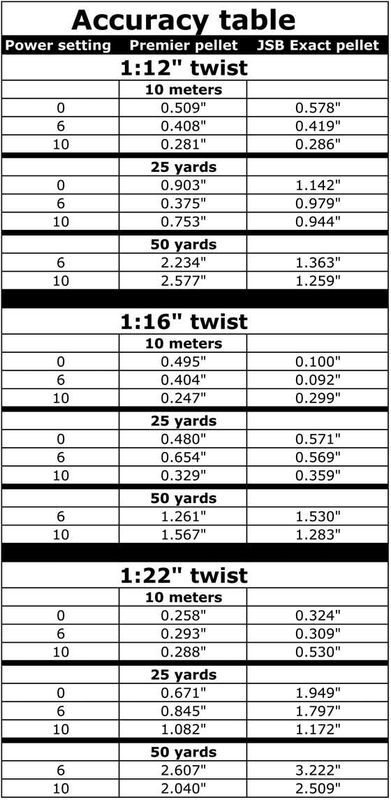OVER STABILIZATION being ALLWAYS better than UNDER STABILIZATION
Maybe, maybe not. What are commonly called super-explosive varmint bullets have been around a very long time. They were designed to disintegrate upon impact at relatively low velocities, like those shot from a Remington .222, with a twist rate is 14:1. Most 22-250s have the same twist rate, yet, you can't shoot the SXs in a 22-250, because the rotation speed (RPM) is much higher due to the much faster velocity. This fact should be obvious, but it isn't typically.
You could say the same thing for pellets, but I don't think there is an airgun capable of shooting a pellet fast enough to have it fail due to rotational forces (RPM). But what does happen as I mentioned above, the pellets tumble. And, we need to realize that pellets aren't made very well, their diabolo shape notwithstanding. In fact, if we put pellets within the same exacting standards varmint hunters demand, they wouldn't fly! Or they would fly—as in off—depending on your point of view.
Maybe, maybe not. What are commonly called super-explosive varmint bullets have been around a very long time. They were designed to disintegrate upon impact at relatively low velocities, like those shot from a Remington .222, with a twist rate is 14:1. Most 22-250s have the same twist rate, yet, you can't shoot the SXs in a 22-250, because the rotation speed (RPM) is much higher due to the much faster velocity. This fact should be obvious, but it isn't typically.
You could say the same thing for pellets, but I don't think there is an airgun capable of shooting a pellet fast enough to have it fail due to rotational forces (RPM). But what does happen as I mentioned above, the pellets tumble. And, we need to realize that pellets aren't made very well, their diabolo shape notwithstanding. In fact, if we put pellets within the same exacting standards varmint hunters demand, they wouldn't fly! Or they would fly—as in off—depending on your point of view.
Upvote 0
